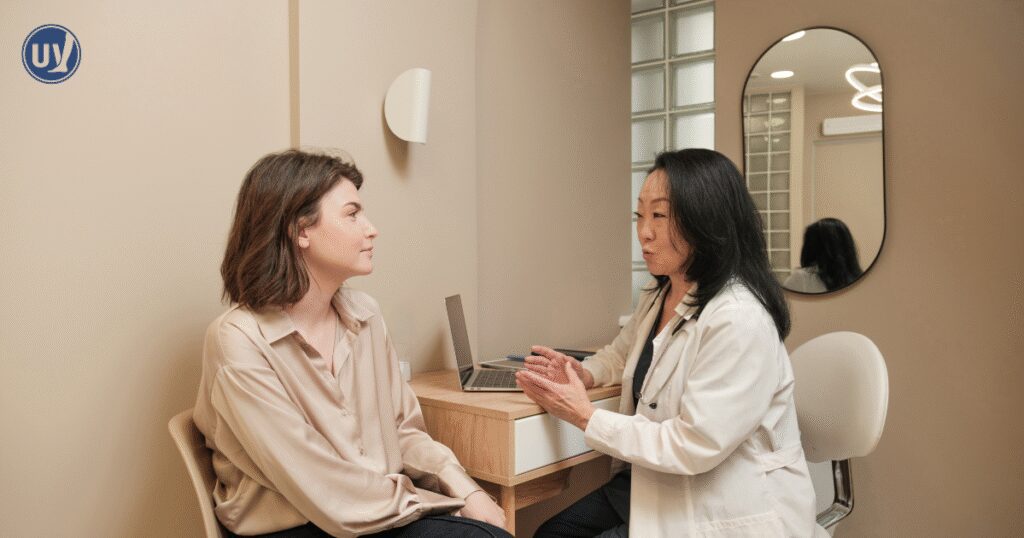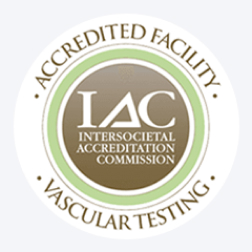Contents
- Understanding Post-Partum Vein Changes
- Why Do Vein Changes Happen After Pregnancy?
- Common Types of Postpartum Vein Changes
- Recognizing Symptoms: What to Look For
- How Long Do Postpartum Vein Changes Last?
- Self-Care and Lifestyle Tips for Healthy Veins
- When to Seek Medical Advice
- Treatment Options for Persistent Vein Issues
- Empowering Your Postpartum Recovery
- Frequently Asked Questions
Bringing a new life into the world is a remarkable journey. Yet, it often comes with unexpected changes. Among these are post-partum vein changes, a common concern for many new mothers.
During pregnancy, your body undergoes significant transformations. These changes can affect your veins, leading to conditions like varicose veins and spider veins. Understanding these changes is crucial for your postpartum recovery.
Hormonal shifts and increased blood volume during pregnancy can weaken vein walls. This can result in visible veins and discomfort. It’s important to recognize these changes as a normal part of the post-pregnancy experience.
Postpartum vein changes can impact your daily life. They may cause leg heaviness, aching, and swelling. However, there are ways to alleviate these symptoms and improve your vein health.
Understanding Post-Partum Vein Changes
Postpartum vein changes are a common concern for new mothers. These changes occur as the body transitions back to its pre-pregnancy state. This period of adjustment can introduce various vein and vascular changes.
The changes are primarily due to hormonal fluctuations and increased blood volume during pregnancy. These factors can stress the vein walls, leading to visible vein issues. Understanding these changes helps in managing symptoms effectively.
Common postpartum vein changes include varicose veins and swelling. While some women may experience improvement in these issues, others might need additional support. Recognizing these changes is crucial for a smooth postpartum recovery.
Typical causes of postpartum vein changes include:
- Hormonal shifts weakening vein walls
- Increased pressure from the uterus affecting vein flow
- Enlarged blood volume during pregnancy
It’s important to remember these vein changes are a natural part of the recovery process. They reflect the body’s efforts to adjust after childbirth. Accepting this can ease some concerns and help focus on effective management strategies.
By understanding these changes, new mothers can take proactive steps. They can incorporate lifestyle modifications or seek medical advice when necessary. This knowledge empowers them to prioritize their vein health confidently.
Why Do Vein Changes Happen After Pregnancy?
Postpartum vein changes result from a blend of physiological adjustments during and after pregnancy. As the body prepares for and recovers from childbirth, numerous changes occur.
During pregnancy, blood volume increases significantly. This surge supports the developing baby but also puts added strain on veins. Hormones like progesterone relax vein walls, which can lead to vein issues.
Pressure from the growing uterus also affects vein function. This pressure can hinder blood flow from the legs back to the heart. As a result, veins may become more prominent or uncomfortable.
Post-delivery, your body begins the recovery process. Veins often gradually regain their strength, but lingering symptoms may persist. Some factors causing vein changes include:
- Elevated hormone levels loosening vein walls
- Increased blood volume enlarging veins
- Added pressure from the uterus affecting circulation
Understanding these causes can help you navigate the postpartum period. It’s crucial to monitor your vein health and consult with healthcare providers if needed.
Common Types of Postpartum Vein Changes
Postpartum vein changes can manifest in various forms. Recognizing these can ease your recovery journey. Varicose veins are a common occurrence. These are enlarged, twisted veins often appearing in legs and thighs. They can cause discomfort, or aching, and may be visible.
Some women may experience swelling in the legs and feet. This swelling is due to excess fluid and pressure on veins, which usually subsides with time.
Recognizing Symptoms: What to Look For
Identifying the symptoms of postpartum vein changes can help you manage them effectively. Many new mothers experience leg heaviness as a common sign.
Aching or throbbing sensations in the legs can occur. Swelling is another symptom often accompanying vein issues.
You may also notice visible veins on the surface of your skin. These are the most recognizable signs of vein changes.
If these symptoms persist or worsen, consult a healthcare professional for guidance and care.
How Long Do Postpartum Vein Changes Last?
Postpartum vein changes typically evolve as your body recovers. Many new mothers see significant improvement within a few months.
However, some vein changes may persist longer. It varies for every individual, as each body heals differently after pregnancy.
If vein issues continue beyond six months, it might be time to seek medical advice. Early intervention can help prevent further complications and improve your quality of life. Understanding that recovery varies can ease concern and provide a realistic timeline for healing. Always consult your healthcare provider for personalized guidance.
Self-Care and Lifestyle Tips for Healthy Veins
Caring for your veins postpartum is an important part of recovery. Small changes can make a big difference.
Regular exercise is beneficial. It helps promote blood circulation and can alleviate symptoms like swelling and heaviness.
Engaging in low-impact activities such as walking or swimming can be particularly helpful.
A balanced diet supports vein health. It should be rich in fruits, vegetables, and whole grains.
Here are some essential nutrients to include:
- Vitamin C for collagen production
- Fiber to maintain a healthy weight
- Antioxidants to reduce inflammation
Staying hydrated is equally important. It helps maintain good circulation and overall vein health.
Elevating your legs can provide relief from symptoms. It reduces pressure and helps blood flow back to your heart more easily.
Consider these helpful habits:
- Rest with your legs raised whenever possible
- Avoid prolonged periods of standing or sitting
- Wear comfortable, non-restrictive clothing
Incorporate these lifestyle changes to foster better vein health. Focus on consistency for lasting results.
When to Seek Medical Advice
It’s crucial to monitor any vein changes after giving birth. Certain symptoms may need professional evaluation.

Contact a healthcare provider if you notice these:
- Persistent leg swelling or pain
- Hard or warm areas on your veins
- Changes in skin color around veins
Seeking medical advice ensures early intervention. Timely treatment can prevent complications and alleviate discomfort.
Treatment Options for Persistent Vein Issues
Persistent vein issues can be concerning for new mothers. Fortunately, effective treatments exist that are both safe and gentle.
A healthcare provider may suggest minimally invasive procedures. These treatments usually involve little downtime, making them suitable for busy mothers.
Empowering Your Postpartum Recovery
Embracing postpartum changes can be challenging, yet empowering. Understanding vein shifts is key.
Educating yourself aids in making informed healthcare choices, enhancing your well-being. Support from loved ones and professionals is invaluable.
Remember, you deserve compassionate care. Your journey through recovery is unique and important. Schedule a consultation with United Vein & Vascular Centers today.
Frequently Asked Questions
Not always. For many new mothers, visible veins and swelling improve within a few months as hormone levels stabilize and circulation returns to normal. However, if symptoms persist or worsen beyond six months, a vein specialist can assess whether treatment is needed to support long-term vein health.
Yes. Staying active, elevating your legs, wearing compression stockings, and maintaining a healthy weight can all support healthy circulation. Avoid sitting or standing for long periods, and talk to your doctor about additional preventive options during and after.
You should contact a specialist if you experience persistent leg pain, swelling, or visible bulging veins that don’t improve after several months. Early evaluation by a vein expert can help prevent complications and restore comfort and confidence.


